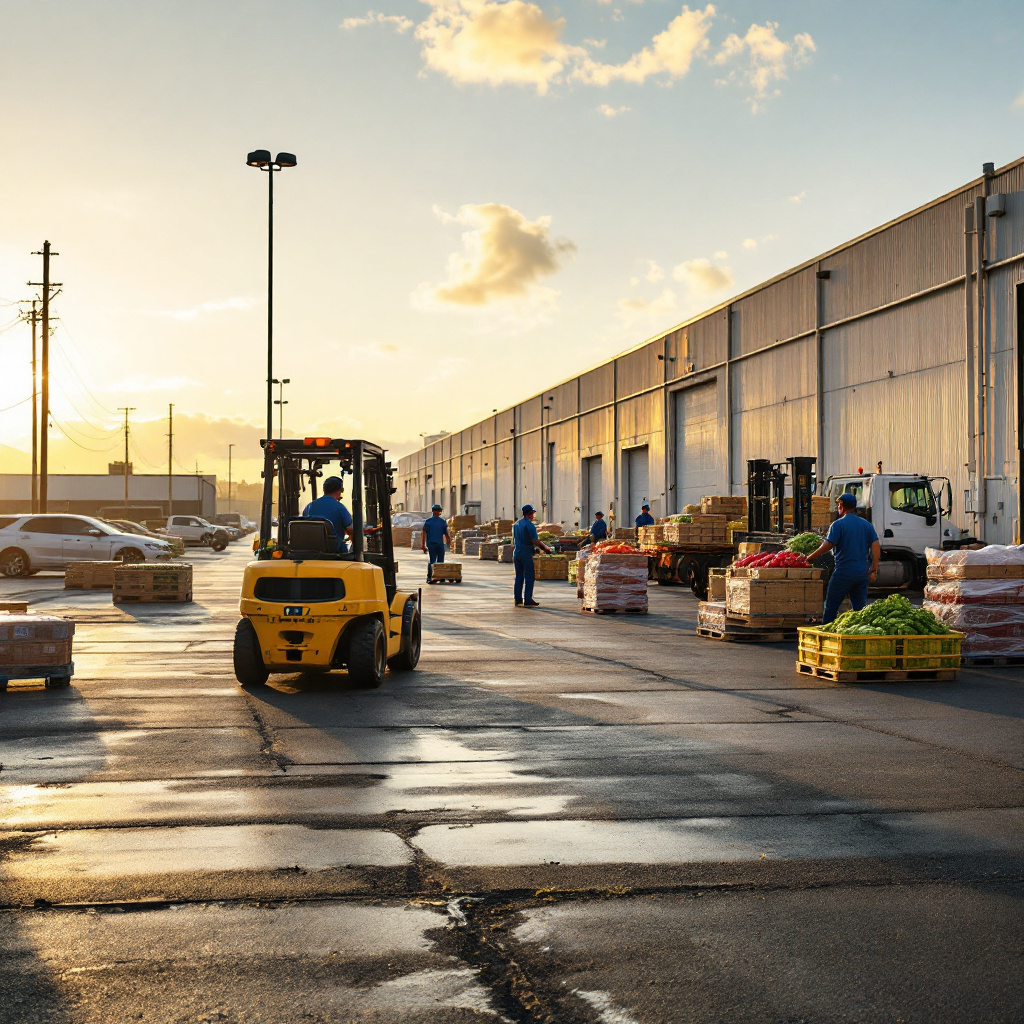Food industry logistics plays a crucial role in ensuring the freshness, safety, and timely delivery of perishable Food industry logistics plays a crucial role in ensuring the freshness, safety, and timely delivery of perishable goods. Since consumer demand for high-quality food products continues to grow, efficient supply chain management is vital. It helps prevent spoilage, reduce waste, and comply with strict health and safety regulations. Therefore, businesses must implement innovative strategies to maintain product freshness throughout the logistics process. This article explores best practices and modern solutions to achieve this goal.
Key Challenges in Food Industry Logistics
- Temperature Control – Perishable products require precise temperature management during storage and transportation to remain fresh.
- Short Shelf Life – Many food items must reach consumers quickly, making fast and efficient logistics essential.
- Strict Regulatory Compliance – Food safety standards vary across regions, requiring strict adherence to hygiene and transport protocols.
- Supply Chain Complexity – Coordinating suppliers, distributors, and retailers requires seamless operations to avoid delays.
- Minimizing Waste – Delivering food before expiration reduces financial losses and environmental impact.
Best Practices for Ensuring Freshness in Food Logistics
1. Cold Chain Management
Maintaining a reliable cold chain is essential for preserving food quality. Key strategies include:
- Using refrigerated storage facilities and transport units to prevent spoilage.
- Monitoring temperature in real time with IoT-enabled sensors to ensure consistency.
- Setting up automated alerts for temperature fluctuations to prevent product loss.
2. Efficient Inventory and Supply Chain Planning
- Implementing Just-in-Time (JIT) delivery minimizes storage time and keeps food fresher.
- Using demand forecasting tools optimizes procurement and prevents excess stock.
- Coordinating suppliers, distributors, and retailers ensures smoother operations and fewer disruptions.
3. Advanced Transportation Solutions
- Optimizing delivery routes shortens transit time and reduces delays.
- Using GPS tracking and fleet management improves real-time visibility.
- Employing sustainable transport, such as electric or hybrid vehicles, lowers environmental impact.
4. Technology-Driven Quality Control
- Blockchain technology improves traceability and food safety by keeping transparent records.
- AI-powered analytics predict disruptions and help optimize distribution strategies.
- Smart packaging with freshness indicators informs stakeholders about product conditions during transit.
5. Waste Reduction and Sustainable Practices
- Partnering with food donation programs helps distribute surplus products instead of discarding them.
- Using biodegradable packaging lowers environmental impact and supports sustainability goals.
- Implementing circular supply chain models ensures excess or unsold products are repurposed efficiently.
Future Trends in Food Industry Logistics
- Automation and Robotics – AI-driven warehouse automation speeds up order fulfillment and minimizes errors.
- Drones and Autonomous Vehicles – These technologies improve last-mile delivery efficiency and speed up distribution.
- Sustainable Refrigeration Technologies – Innovations in eco-friendly refrigeration systems lower energy consumption.
- Enhanced Data Analytics – Predictive modeling improves demand forecasting and strengthens supply chain resilience.
- Smart Warehousing – IoT-enabled warehouses enhance inventory tracking and order accuracy.
Conclusion
Ensuring freshness in food logistics requires a combination of advanced technology, strategic planning, and compliance with regulations. By optimizing supply chain processes, maintaining an effective cold chain, and adopting sustainable practices, businesses can improve food safety, reduce waste, and meet consumer expectations. As the industry evolves, companies that implement innovative logistics solutions will remain competitive and preserve product integrity.


